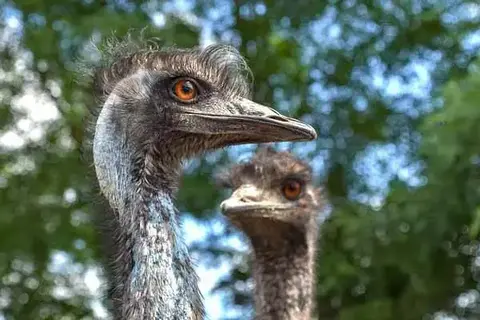What Is The Structure Of Honey Bees Eyes?
Camilo WalkerTo an unusual question about how many eyes a bee has, we immediately answer: “Only five eyes, 3 are simple, and 2 are complex, consisting of facets. Bees have a complex visual system. It unites the different organs of the visual system, which are responsible for certain functions.
How many eyes does a bee have?
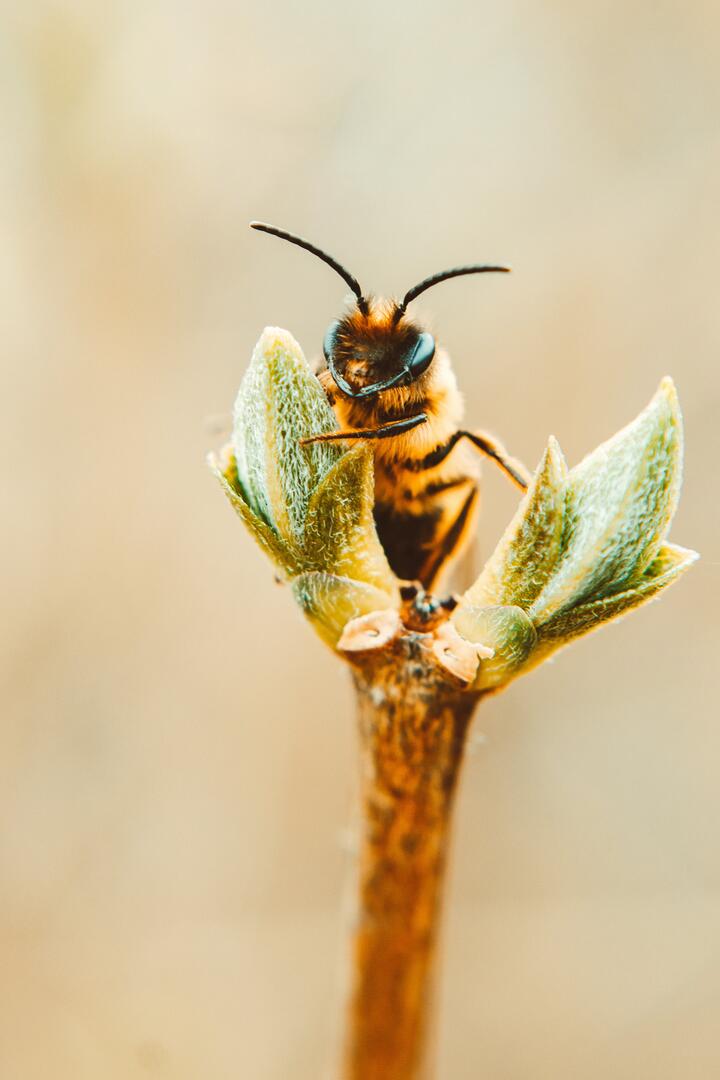 Photo by Lisa Fotios on pexels
Photo by Lisa Fotios on pexelsSuch organs help bees orientate themselves in space, compensate for lack of light, allow them to smell flowers at a distance of up to 1 km. They are not only responsible for the perception of the environment, but also perform additional functions. Honeybee toilers have the eyes of a complex structure on the sides of their heads. They are formed by a huge number of special cells. They are called facets. Bees see their surroundings as a mosaic, which consists of tiny particles. Each facet is responsible for forming its own part of the picture.
Features of the eyes of a queen bee, drone, work bee
If you compare the visual organs of bees of different classes, you will find differences. A worker bee has simple eyes on its shadows. In contrast, a drone and a bee have such organs directly on its forehead. Insects have a different number of facets (ommatidia). In bees, their number often reaches 4,000 pcs., in worker bees – 5,000 pcs., in drone bees – 9,000 pcs.
Bees’ eyes’ peculiarities
The facet eyes are perfectly visible in the drones, as they converge on the shadows. In a bee uterus, a work bee, it is difficult to distinguish these visual organs with a superficial look. In all the insects described, simple ocelli have a primitive device. These are special transparent lenses, they protrude considerably from the head. Each of them captures images separately.
Mechanism of vision of a bee
When looking closely at the facet eyes using a magnifying glass, you will notice a hexagonal embossment on the surface of each organ. Because of this specific embossing, the eyes are often called mesh eyes. Any of the facets is a bundle that consists of cells that have an elongated shape, a thin edging. Between the neighboring eyes are special pigment cells.
The presence of thousands of facets does not provide bees with good eyesight. Regardless of the environmental conditions, the image of objects is not clear enough. It is divided into separate points. A special binocular system device imposes its limitations. It has been proved that bees’ eyes are more adapted to the perception of objects that are in motion, in flight. The vision does not cope well with the perception of stationary objects, do not change their location.
The visual information that bees perceive through their eyes is instantly transformed into nerve impulses. They immediately enter the brain. There, first, the analysis takes place, and then the processing of the incoming information. After the response is generated by the central nervous system department, the signal is transmitted to the peripheral organs. The vision of insects is characterized by volume and blurred picture.
Location and number of eyes in a bee
Regardless of the class of the insect (working bee, drone, queen bee), it has five eyes. On the head of any individual are located:
•three small dorsal eyes (ocelli);
•two large eyes with a complex structure.
The second type of eyes is called facet eyes because they are on the sides of the head, formed from a huge number of facets. Such eyes have an elongated shape. They represent convexity, which is directed downwards.
The facet eyes are formed from ommatidia, which are structural units. They are densely placed, the neighboring ommatidia are closely adjacent to each other. Each of these functional units, which are part of a facet organ, has a refractive, insulating, and perceptive part.
Interestingly, the size of each honeybee’s eye is on average 2 millimeters. And the number of eyes remains unchanged for each individual. The most significant area has the visual organs of the drone, the second place on this criterion is occupied by workers, and the second place is occupied by the uterus list.
Why so many eyes?
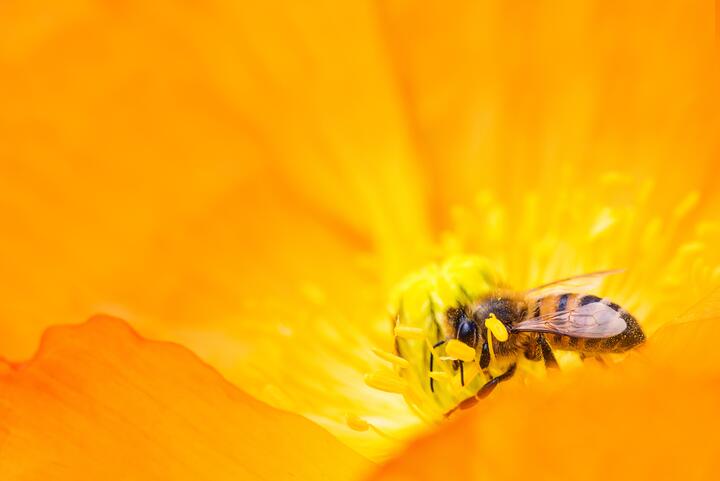 Photo by Kat Smith on pexels
Photo by Kat Smith on pexelsThe visual apparatus of industrious bees is initially poorly developed. To compensate for the lack of vision, nature has endowed them with several visual organs. Five whole eyes allow these insects to orient themselves in the environment, to get information about flowering plants, to see different objects. Big eyes help to see objects, to form a complete picture of what is happening around an insect.
Dorsal organs (ocelli) are responsible for twilight vision. They help bees to learn about the approaching dawn and the coming of a new day, as well as receive information about its end without fail. Ocelli partially replace touch; as part of the binocular system, they have a secondary function. The facet organs form images in the form of a mosaic, which consists of individual points and helps to obtain a holistic view of objects.
The facet eyes with the complex structure are used as the main link of the visual apparatus. In contrast, simple eyes are considered a secondary link. They provide bees with objective information about the surrounding space.
Color perception of the world by the bees’ eyes
Such insects distinguish many colors and shades. Only they do not perceive the red color, can not distinguish it from black. By the way, that’s why all winter examinations of bees are carried out using a red light, bees can’t see the light, so they are less worried. The images of the world around bees are formed in the ultraviolet spectrum.
Adults can best perceive shades of white, blue, and yellow. The vision of adults can be called mosaic. When forming an image, their brains do a lot of work. The whole process looks like this:
•Each of the thousands of facets perceives only one part of an object, not the whole object.
•The brain processes the incoming images with the individual parts of the object captured.
The brain merges the individual parts of the object, and the worker bees perceive the whole image as a result.
Bees do not see a special difference between orange, green, salad, and yellow colors. The bee vision system has the ability to perceive polarized light. This quality allows insects to navigate in space calmly.
Can be seen by bees in the dark?
Bees can see very well in total darkness. They can navigate the electromagnetic field of the earth. Some individuals prefer to lead a nightlife. In the dark, bees can distinguish not only flowers but also unmistakably determine the road leading home. The visual system of these insects perfectly adapted to the conditions of inadequate lighting. Flights in total darkness do not create problems for bees that can safely return to their native hive at night.
It should be noted that the worker bees rarely fly in darkness, with few exceptions. This is due not only to the need to rest at night but also to the lowering of the electromagnetic field. This factor contributes to a disturbance of orientation in the space of bees, so they mainly prefer not to fly at night. Experience has found that these insects can distinguish the shape of objects.
What happens if you blind a bee with bright light?
If you blind a passing bee with a flash of bright and directed light, the bee will simply fall, losing its orientation. Such an experiment will severely damage the insect, which has a significant benefit. So do not dazzle the bee. Its visual organs are unable to process light that is too bright and strong. The blinded, stunned worker bee does not recover immediately after exposure to a flash of light. She takes off after a certain time to continue her journey.
Recent studies have found myopia in the faceted organs of honeybees. These workers clearly see objects that are at close range. The farther the object is, the harder it is for the bees to see them in detail and to form their own idea about them. At a distance of more than 50 cm, the insects notice only the objects that move. Honey bees are best seen at a distance of a few centimeters.
Structure of Honey Bees Eyes
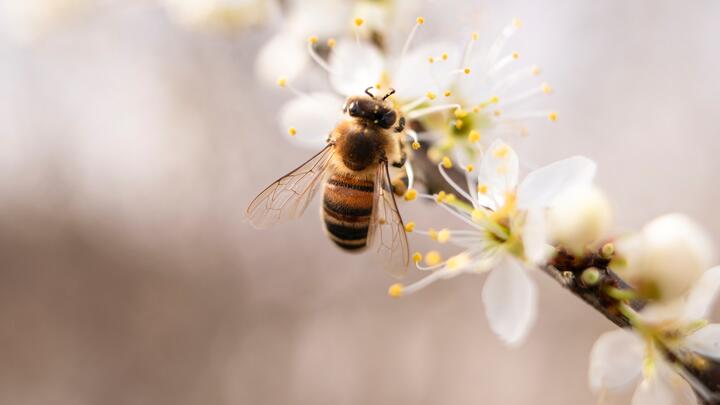 Photo by Thijs van der Weide on pexels
Photo by Thijs van der Weide on pexelsThe bee’s eyes are compound structures composed of several small units. The ommatidia are made of cells in an inverted cone shape. Light passes through the lens to the crystalline cone, which then channels the light through the structure. The ocelli are located on the side of the head so that they can view horizons and the horizon line. They also have a central retina, which is visible when the head is rolled forward 90 degrees.
All kinds of bees have five eyes. The two biggest eyes are called compound eyes and are made of thousands of tiny lenses. Each lens takes in a small part of the scene. Together, these tiny lenses form a larger picture resembling a mosaic tile. Those ocelli are responsible for detecting movement and can recognize the distance from where they are flying.
Bees have two sets of eyes. The compound eyes are located at the side of the head, and the three tiny ocelli are located on top of the head. These three types of eyes are equally important to the bees’ navigation. The worker bees have 4,000-6,000 ommatidia while the drones have between 7,000-8,000. They can use these ocelli to see in low-light conditions and recognize changes in brightness.
In addition to the compound eyes, honeybees have retinas. These retinas have a complex structure consisting of six hundred and ninety million individual cells. Each photosensitive cell in the compound eye is called a ‘facet’. The ommatidia in each ocellar eye have specific skills. For example, the ommatidia in the male bee’s compound eyes are highly specialized.
The lenses of honeybees are composed of three distinct layers, referred to as ocelli. In contrast to human eyes, bees have two distinct kinds of lenses: ocelli and ommatidia. The ocelli of diurnal bees are similar to those of diurnal wasps. The lens of the male bee is characterized by the presence of screening pigments, while the ocelli in the nocturnal eye are dark.
The eye of honey bees is similar to that of humans, with a triangular ocellus and two dorsal and central ocellus. It is the same in both species, although the ocelli in male bees are more sensitive. The ocelli in males are the ones used by the bees to recognize objects in the environment.
The ocelli of the honey bees’ eyes are a compound of 800 retinal cells. These cells have been studied in detail before, but what are their optical characteristics? In addition to their size, the ocelli have been examined for years, but their optical properties are still unknown. A new study published in the Journal of Applied Biology (APG) describes the anatomical structure of the bees’ ocelli and makes the first detailed description of the ocellar retina.
The eyes of the honey bees are complex. Their ommatidia are made up of six different facets, each with its own photosensitive cells. The ommatidia are divided into groups based on their function. A bee’s eyes are very complex, and its structure is closely related to its ecological niche. The eye of a honey bee is also different from the eyes of a human.
The lens of a honey bee’s eyes is a three-layered structure. The outer layer collects UV light, while the middle layer contains the most intense UV light. The inner layer is a compound of the two layers. Its ocelli are the focal point of the bee’s vision. The ocelli are composed of a single lens and ocelli are arranged in a triangle.
In addition to the ocelli, honeybees have two different types of eyes. The compound eyes of a female bee have 6900 hexagonal facets, while the simple eyes of a male bee have only one. Both types of bees are able to distinguish different objects, which is the basis of their navigation. It is the same with honey bees.
- Wildlife10 Interesting Facts About The European Lynx

- LivestockWhat Can’T Chickens Eat?By Amelia B
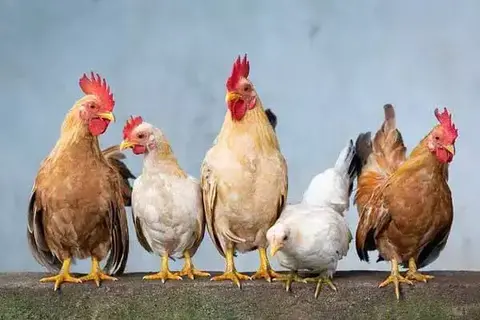
- BirdsWhat Do Swans Eat In The Wild And At Home?By Camilo Walker
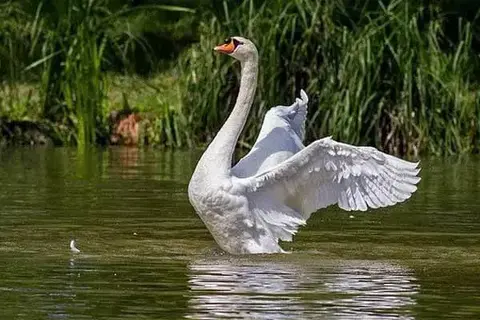
- WildlifeAntelopes Gnu’S WeightBy Murphy Scott

- BirdsWhich Hawk Is The Largest?By Khai Dove

- BirdsAmazing Facts About A PeacockBy Murphy Scott
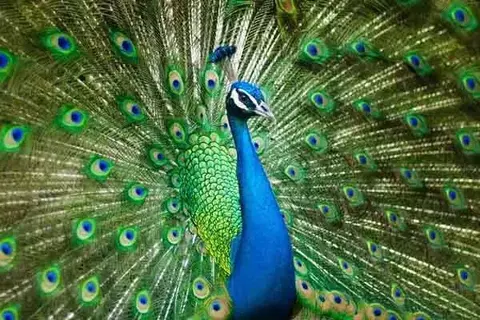
- WildlifeWhat Is The Elephant’S Weight?By Charlotte Green

- Wildlife10 Interesting Facts About BadgersBy Lucas Torres

- Wildlife7 Interesting Facts About ChimpanzeesBy Charlotte Green
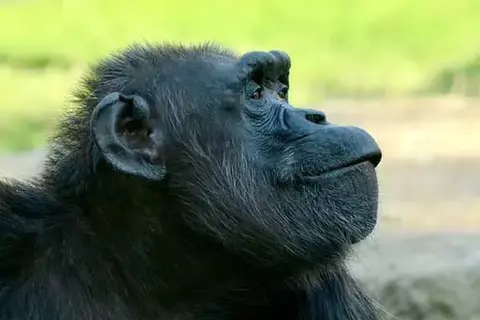
- BirdsWhat Is Emu Running Speed?By Khai Dove
